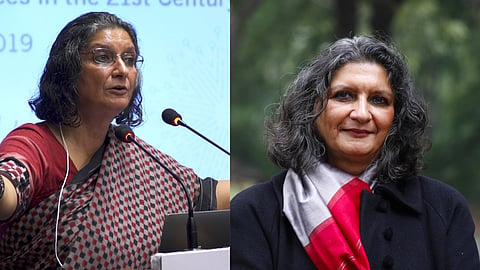
- HOMEGROWN WORLD
- #HGCREATORS
- #HGEXPLORE
- #HGVOICES
- #HGSHOP
- CAREERS
- ABOUT US
- CONTACT US

It all began when Kavita Singh stumbled upon a book called The Dance of Shiva, which sparked her interest in the interplay between sculpture, poetry, religion, and history. Unaware of the name of her newfound passion, she was told that this interest aligned with the discipline of art history.
Kavita Singh's academic endeavours revolved around the history of Indian paintings, with a particular focus on Mughal, Rajput, and Deccan art. She also delved into the study of museums and their historical significance, political influences, and roles in the art world. According to her, in a place like India, art history is not just a necessity but an urgent one.
Kavita believed that there was a lack of attention and curiosity in the discipline of art history, which is given barely any recognition. However, her work as an art historian and the praise she received through awards brought limelight to her field, which still has a small footprint in India and hasn't grown to mainstream status as it has in other countries.
Particularly intriguing to Kavita was the opportunity to challenge established tropes or truisms, break down their validity and perhaps even subvert and invert them in some way. Kavita Singh revelled in the opportunity to challenge established beliefs through her art historical studies. An example of such a truism that she broke down is the belief that Mughal art is foreign, alien, and an imposition on traditional Rajput art (both fall under the purview of her work), which is considered native to the mythos of India. She successfully debunked the notion that Mughal art was foreign and imposed on traditional Rajput art. Her work showcased the strong linkage between the two art forms, revealing how Rajput painting was influenced by migration from the Mughal court.
Apart from working on the history of Mughal and Rajput art, she also extensively studied Deccan art history. Her last book, Scent Upon A Southern Breeze: The Synaesthetic Arts of the Deccan, delves into the historical role of smells and perfumes. The study of Deccan arts is gaining much-deserved attention in the 21st century because of their hybrid, opulent nature. The essays in the book explore subjects like the practice of perfume-making in the Deccan, the craft of Bidri-ware metalworking, and kalamkari textiles and their exquisite motifs. She claimed all arts are synaesthetic because when one looks at a painting, it reminds them of all the sensations associated with the actual object it represents.
Kavita's interest in the study of museums stems from the fact that museums do not remove the context of artworks but provide a new context altogether that comes from the viewers themselves, which is produced from their encounters with this field. This realization fueled her pursuit of the study of museums and their significance in preserving cultural heritage.
Despite her immense contributions, Kavita faced challenges in her academic journey. The rigid atmosphere at JNU, where she worked as a professor, created hurdles for her prestigious achievements. At a certain point, the state of affairs at JNU was so stringent (or as Kavitha used to refer to them comical), she was denied leave to go and accept the prestigious Infosys Award for the Humanities in 2018. The process of going to Bangalore for her prize proved to be more arduous and fraught with challenges than one might believe. The campus atmosphere in JNU, Delhi, was extremely fraught with tensions and the administration imposed restrictions on her paperwork and academic trip. Nonetheless, she was present to receive her award.
Her paramount desire was to make cutting-edge research in art history accessible to everyone by translating it from English into other regional languages. This would make more people aware of the discipline of art history and encourage another generation of scholars to be active in the field long-term.
As we bid farewell to a true visionary, we must remember how she spent her life trying to make art history accessible to everyone. Her dedication to exploring the nuances of Indian paintings, reaffirming the significance of museums, and preserving cultural and artistic heritage has left an indelible mark on the field of art history.
If you enjoyed reading this, here's more from Homegrown :
A Gorkey Patwal Photoseries Captures Indian Historian Irfan Habib In His Aligarh Home
'Stories From Goan Houses' Is A Heartfelt Tribute To Goan Culture & Architecture
A Rider, An Auteur, & An Artist: Remembering The Cultural Legacy Of Navroze Contractor
